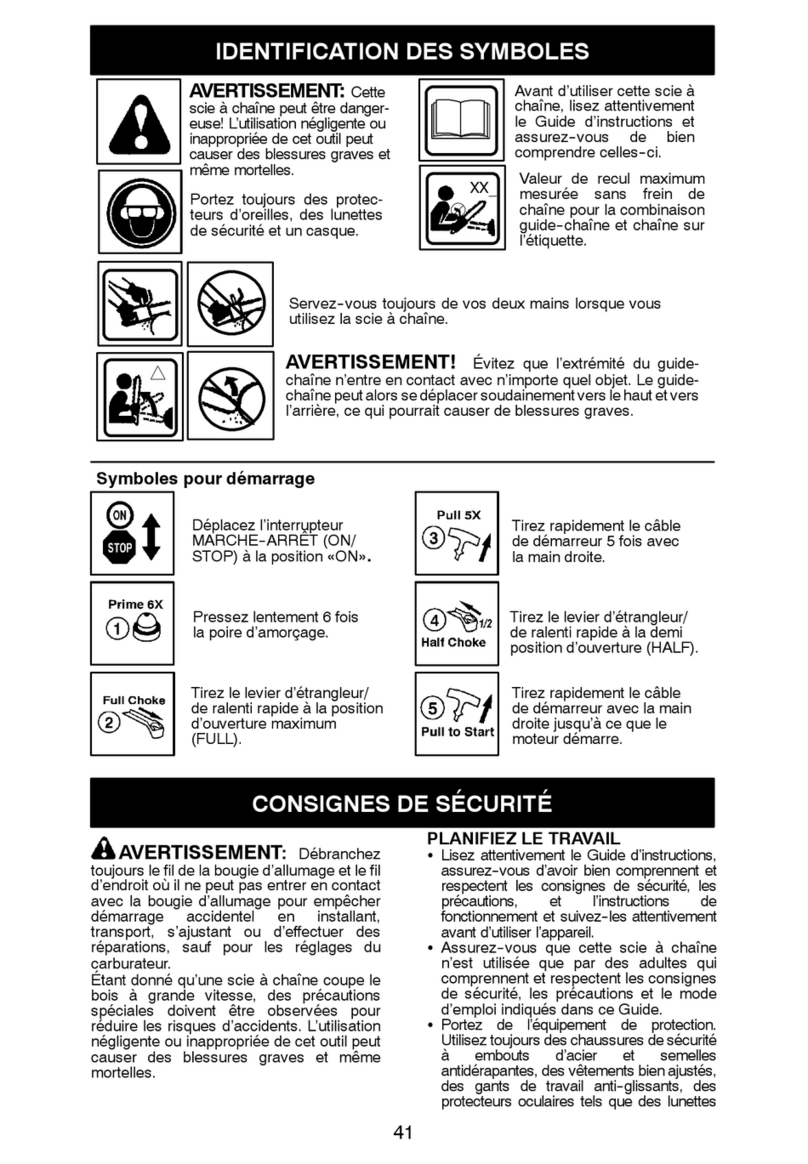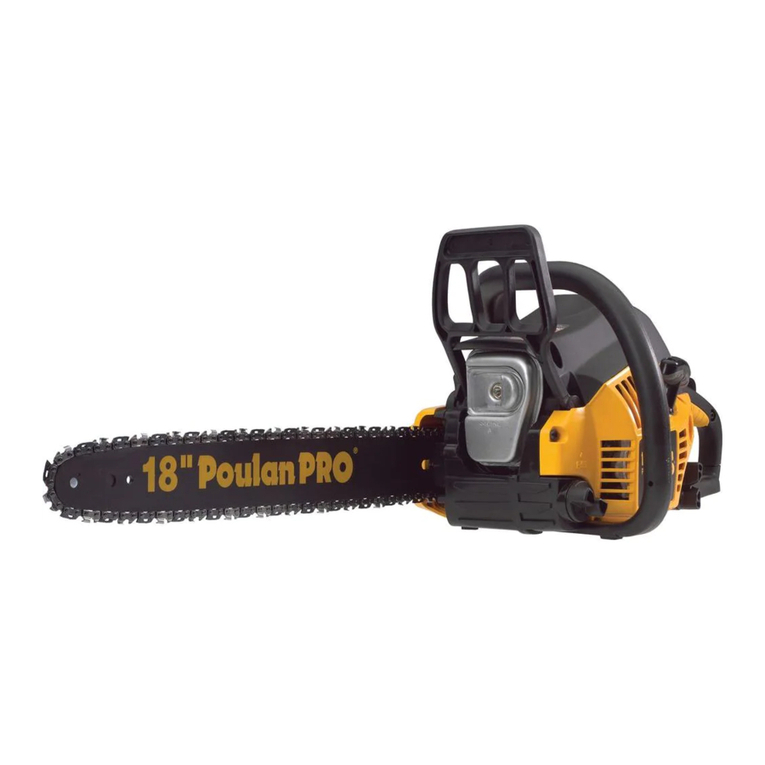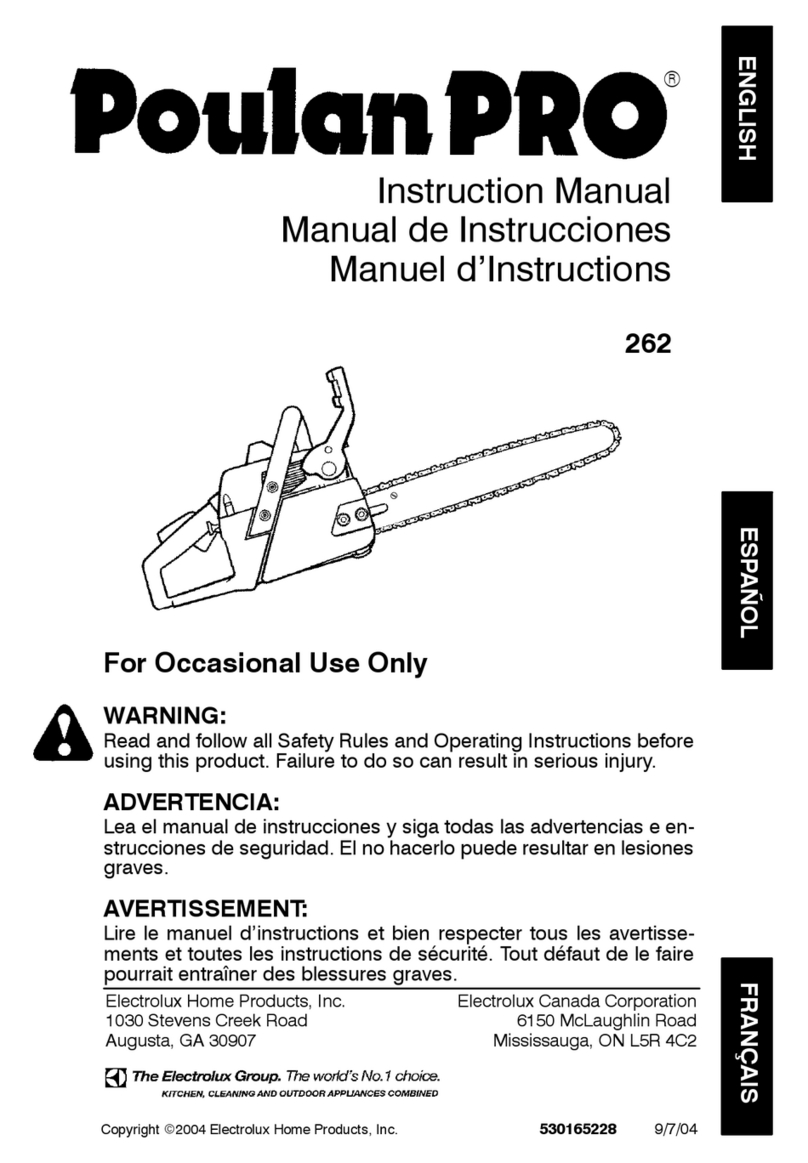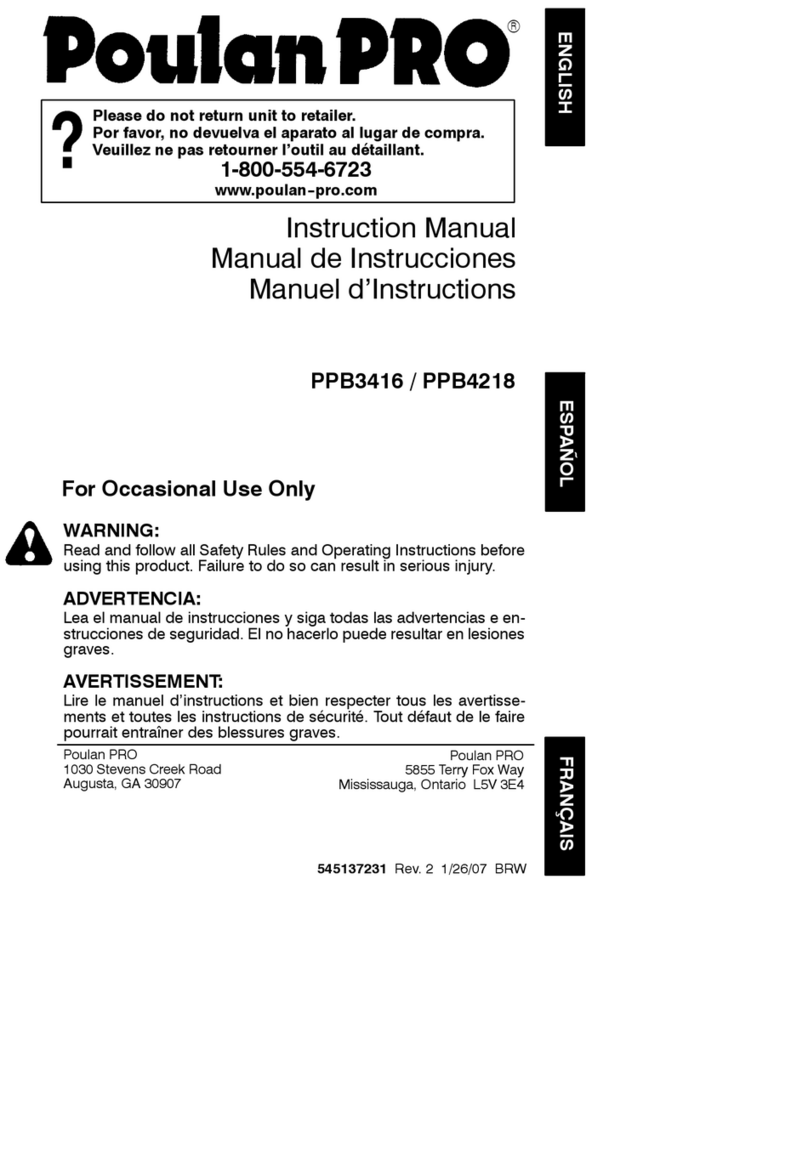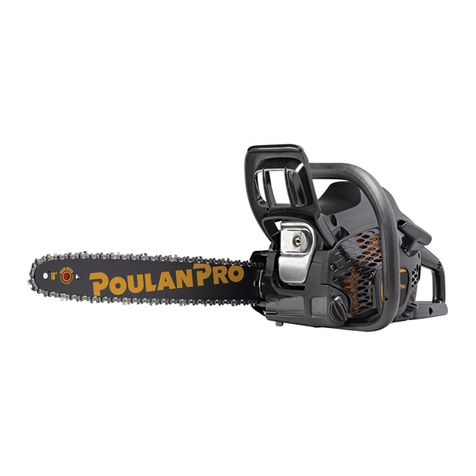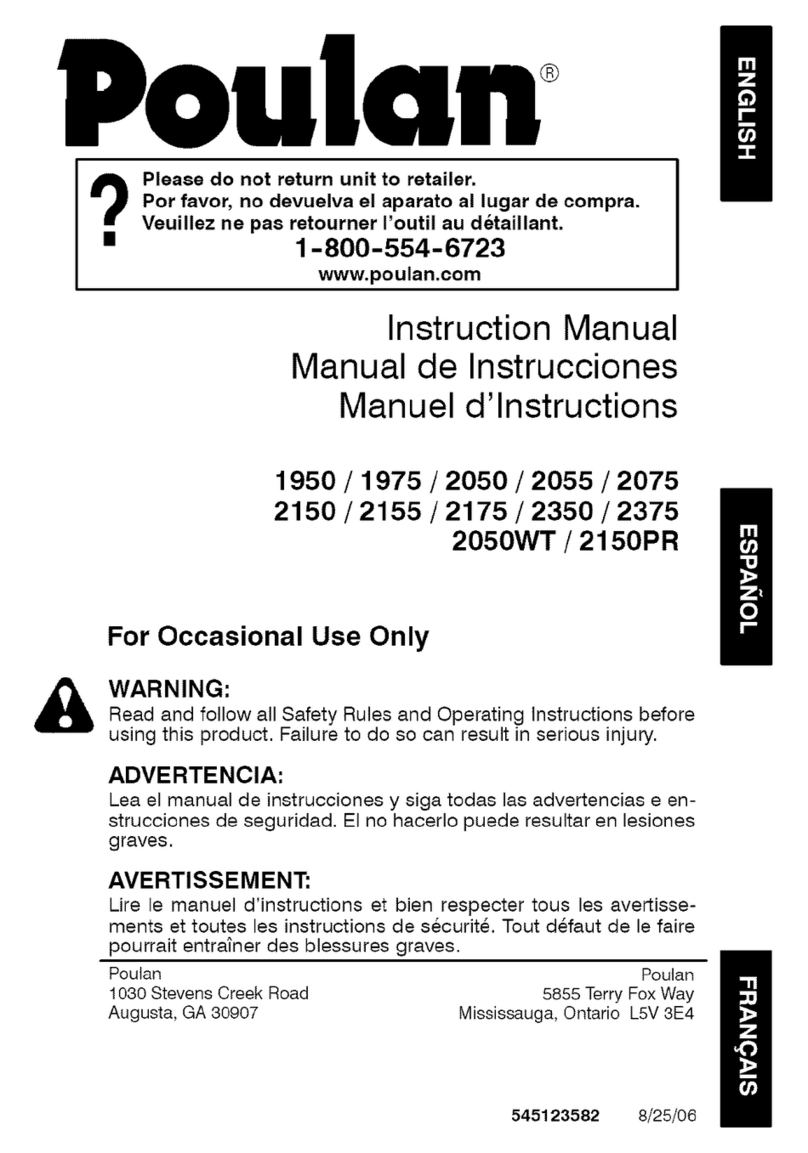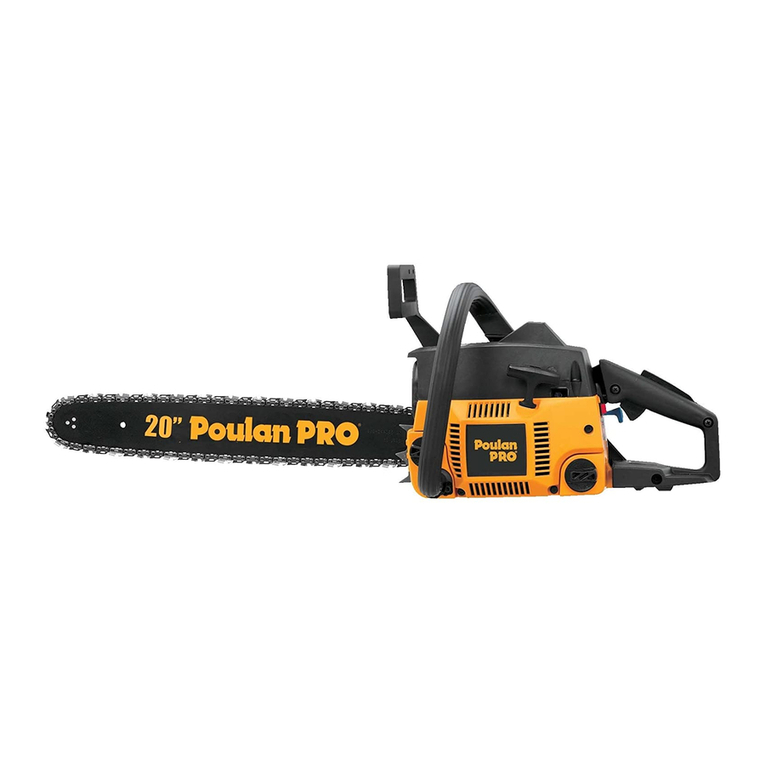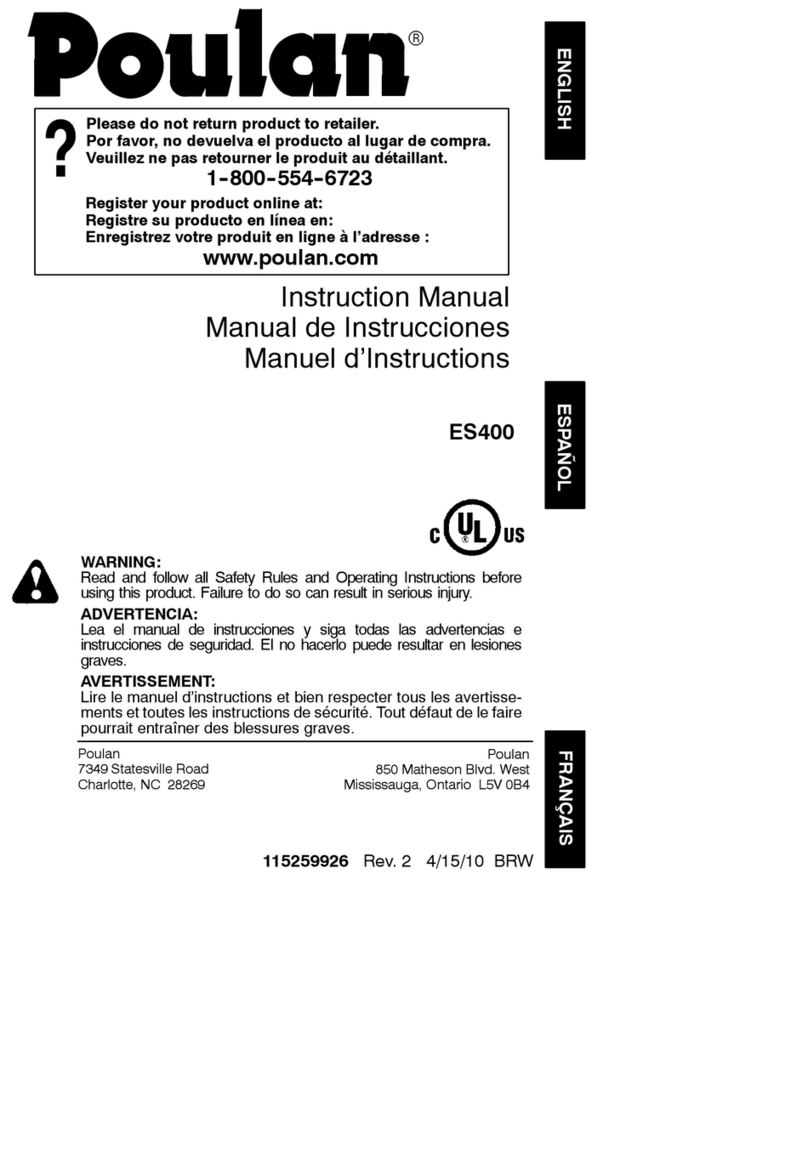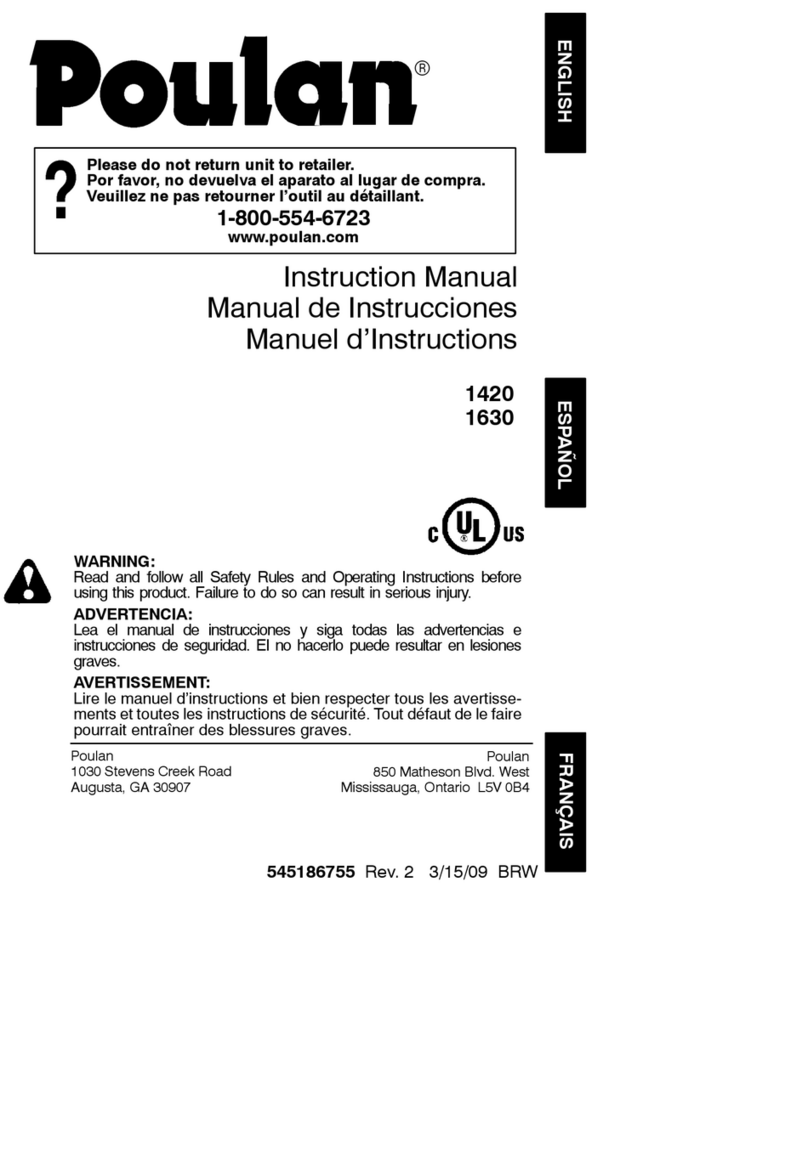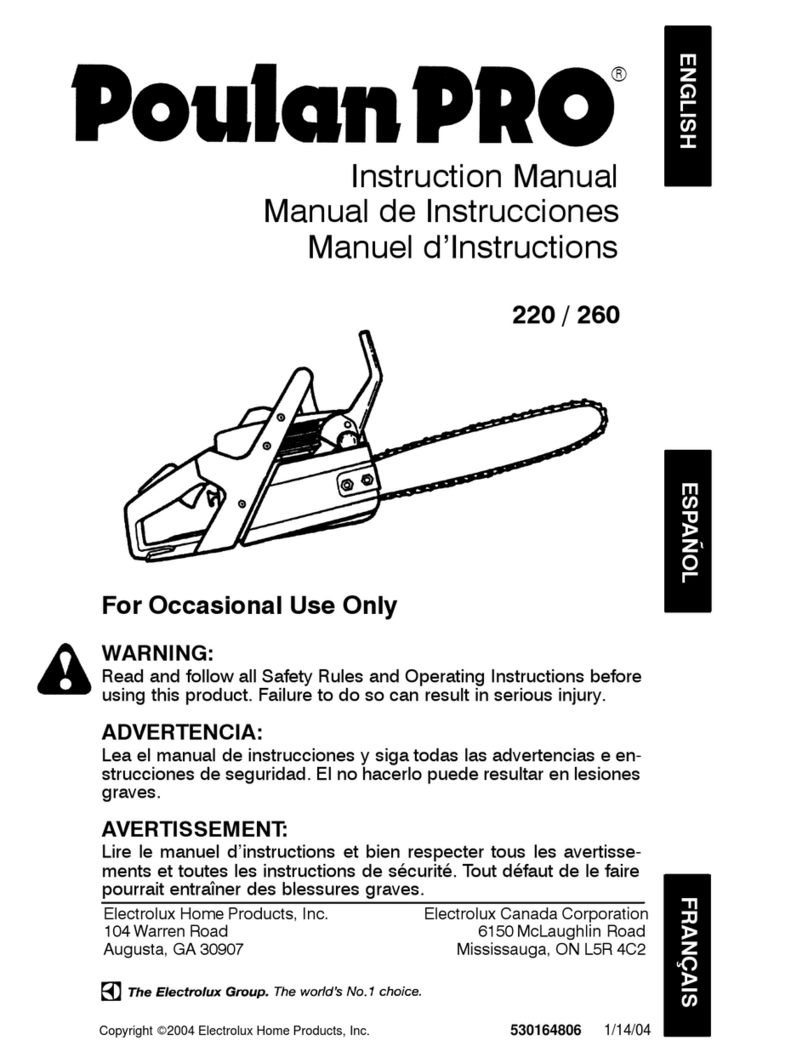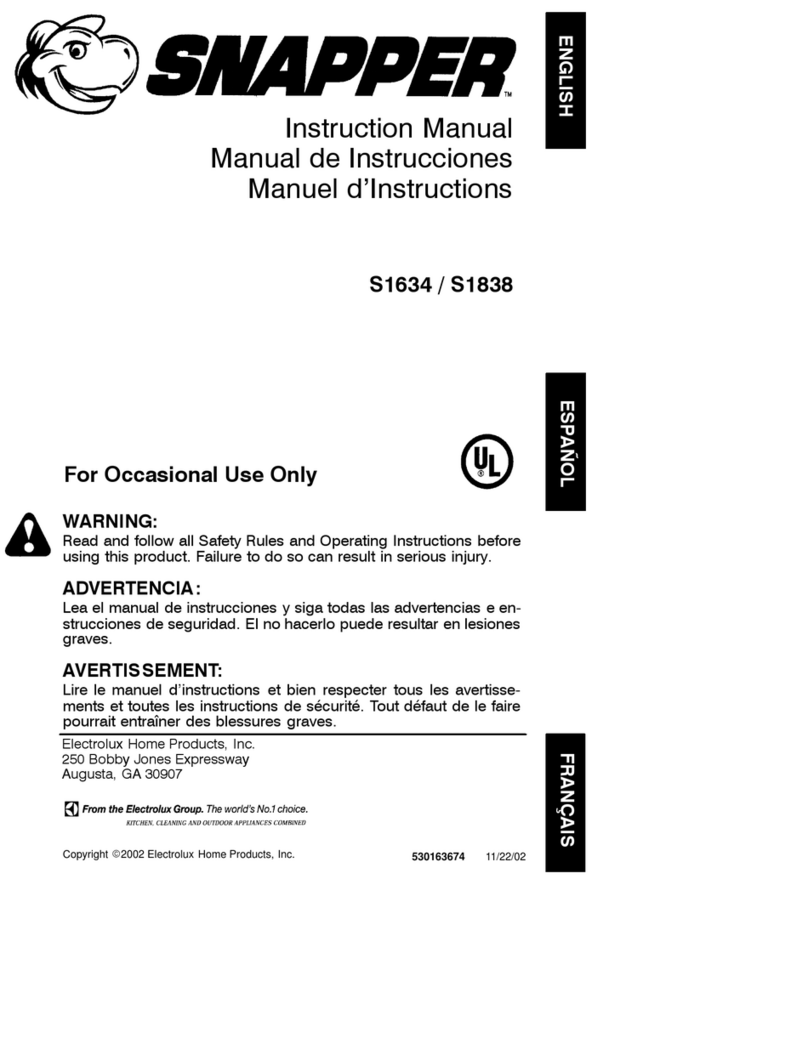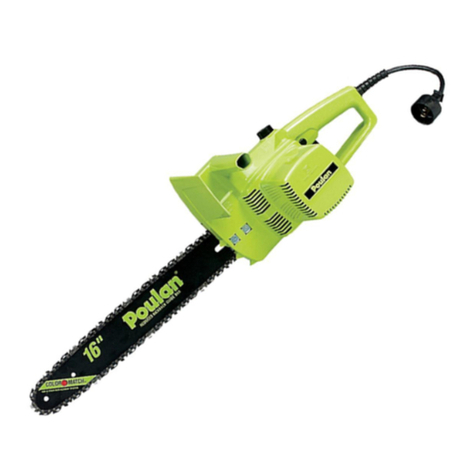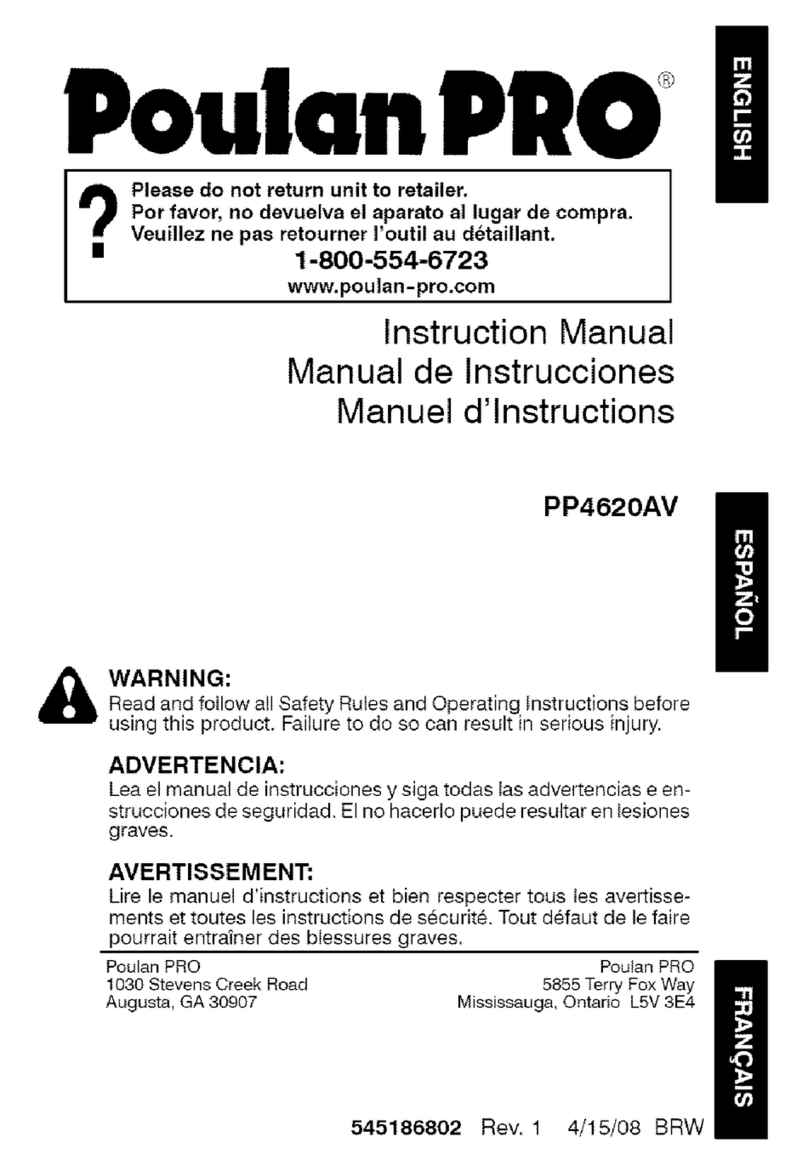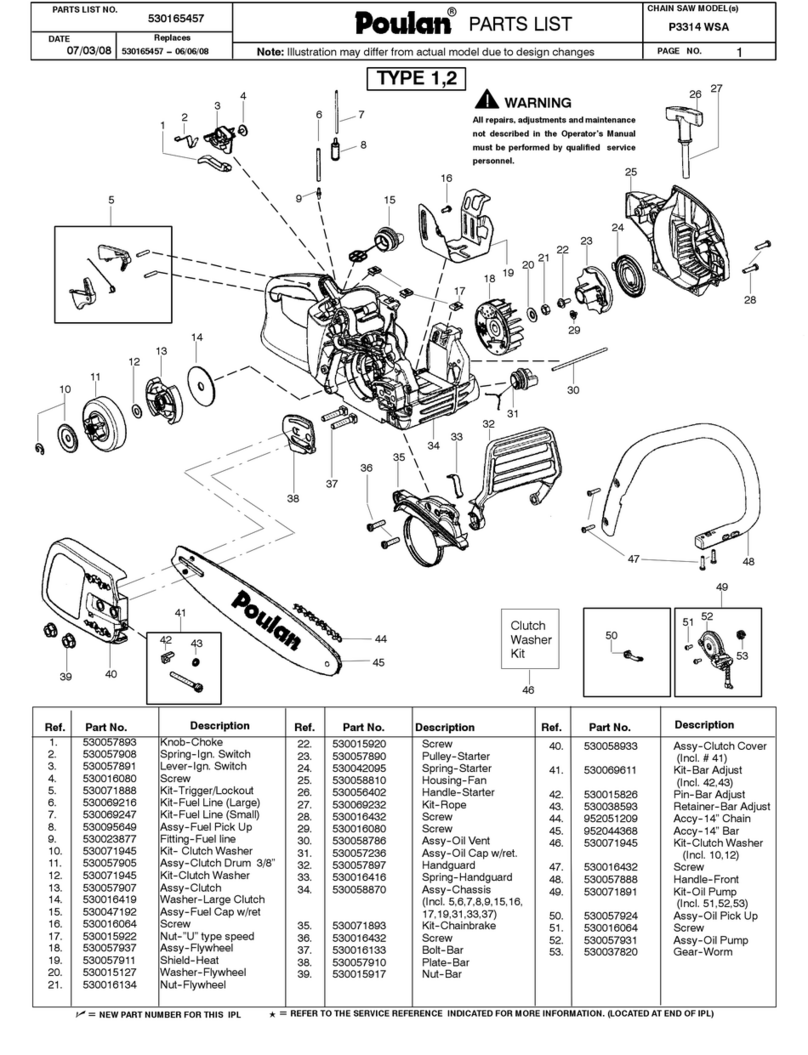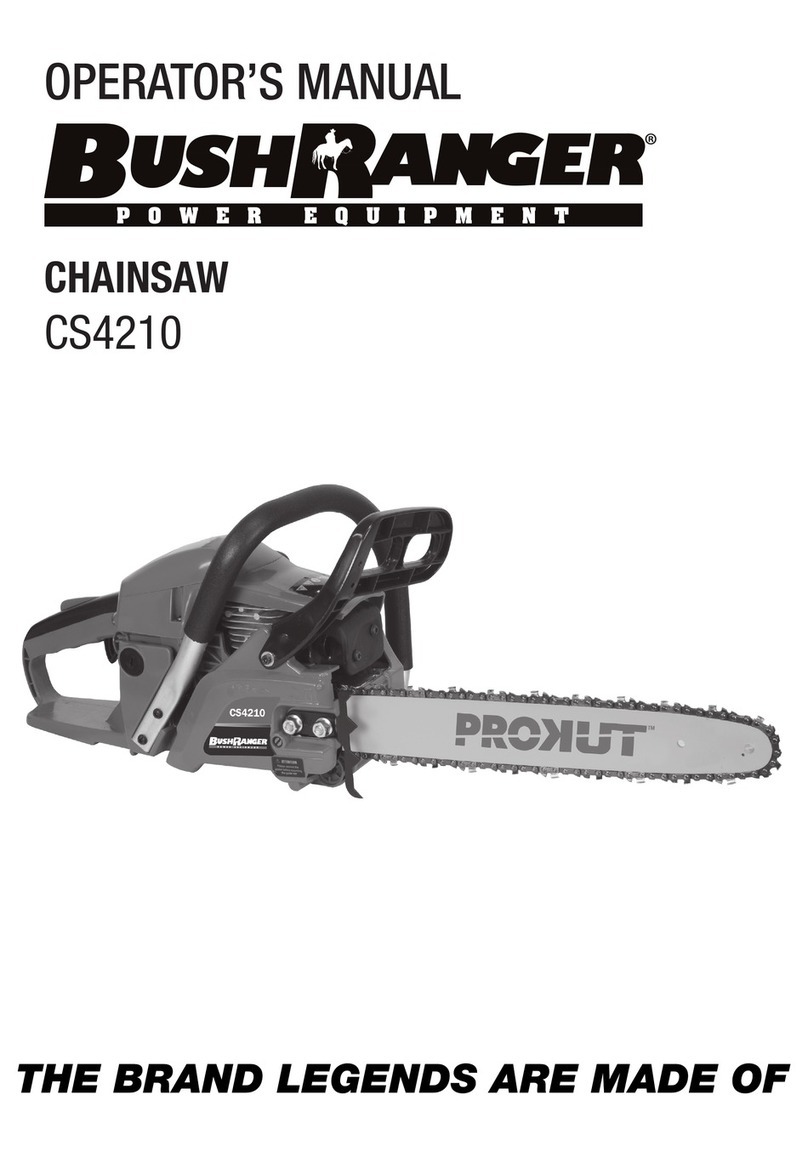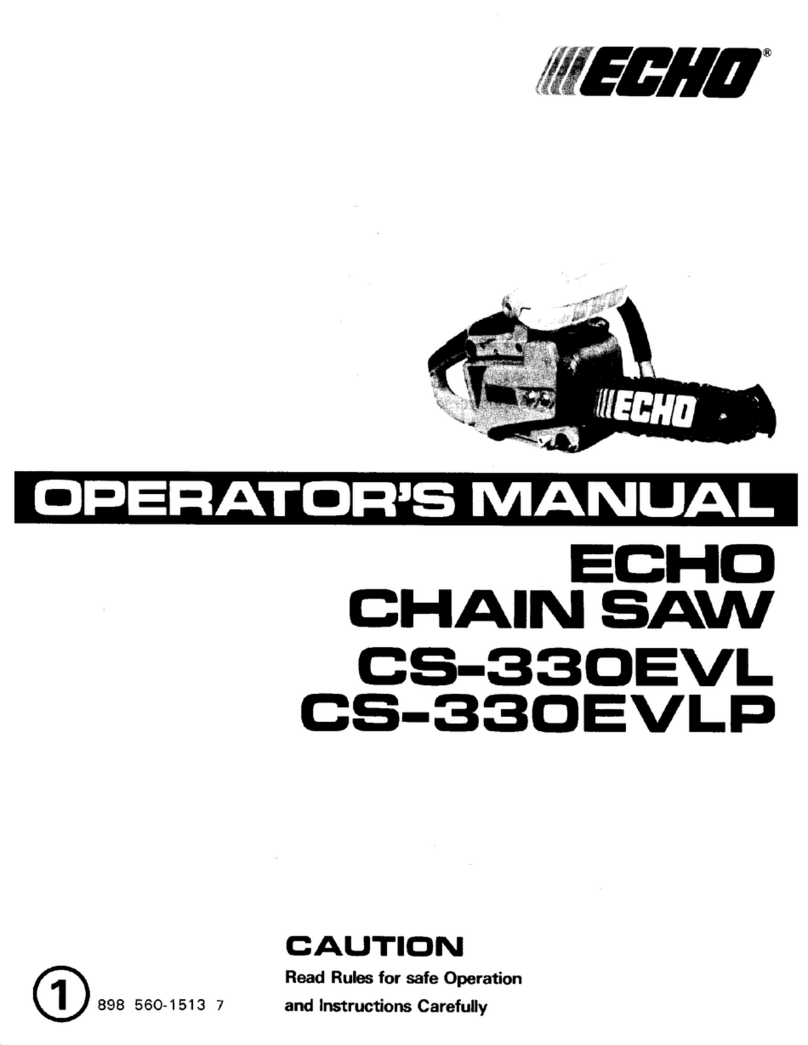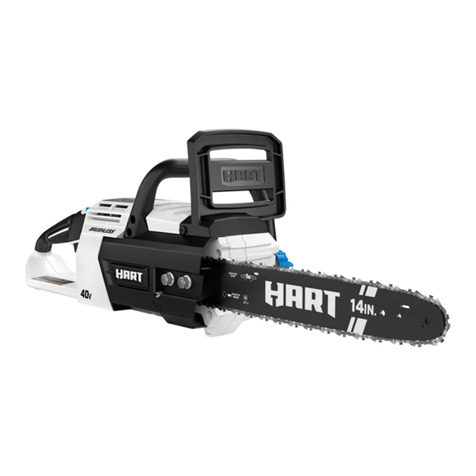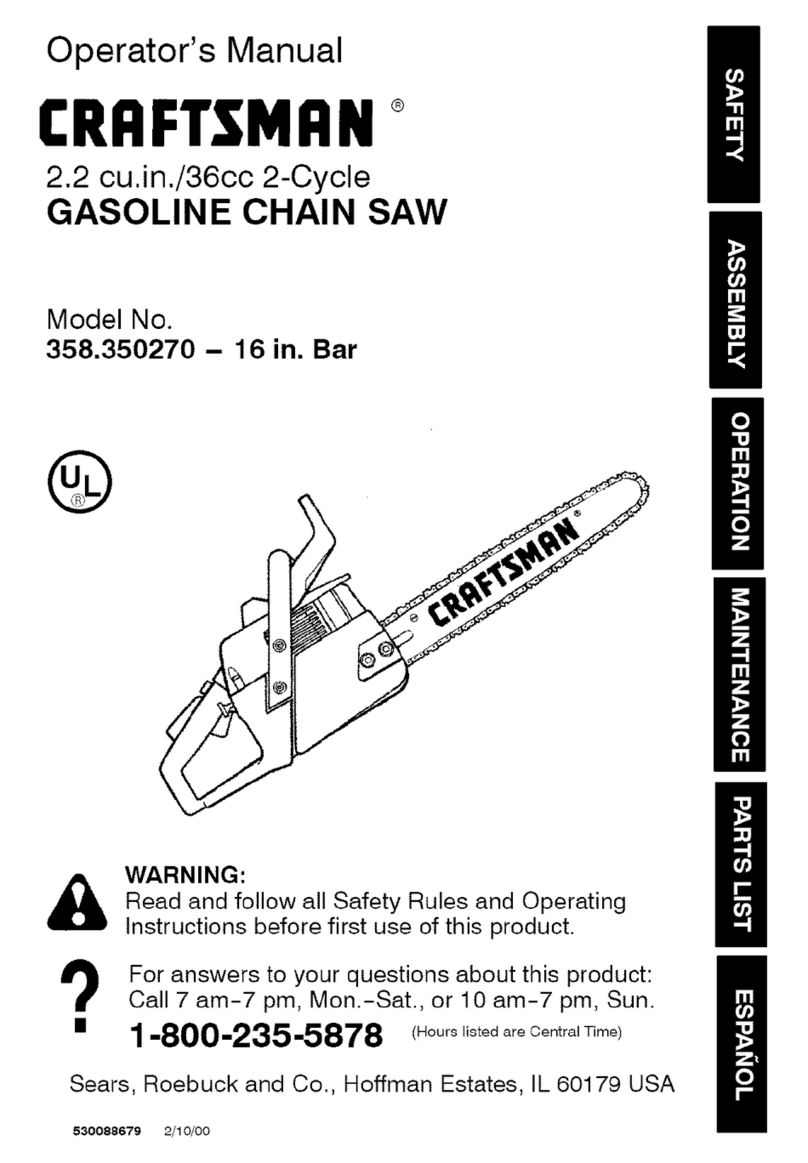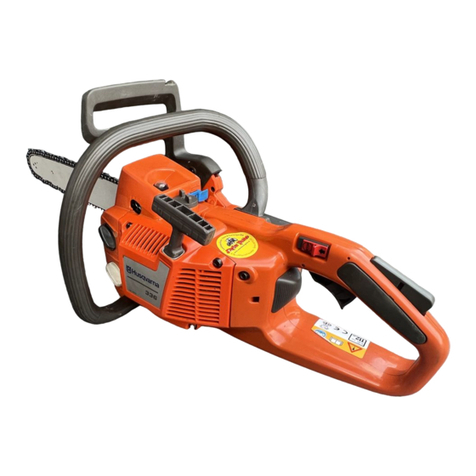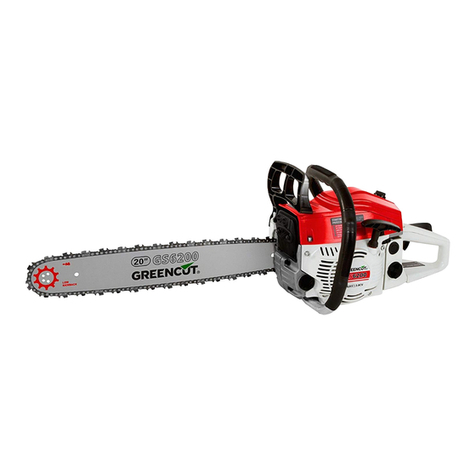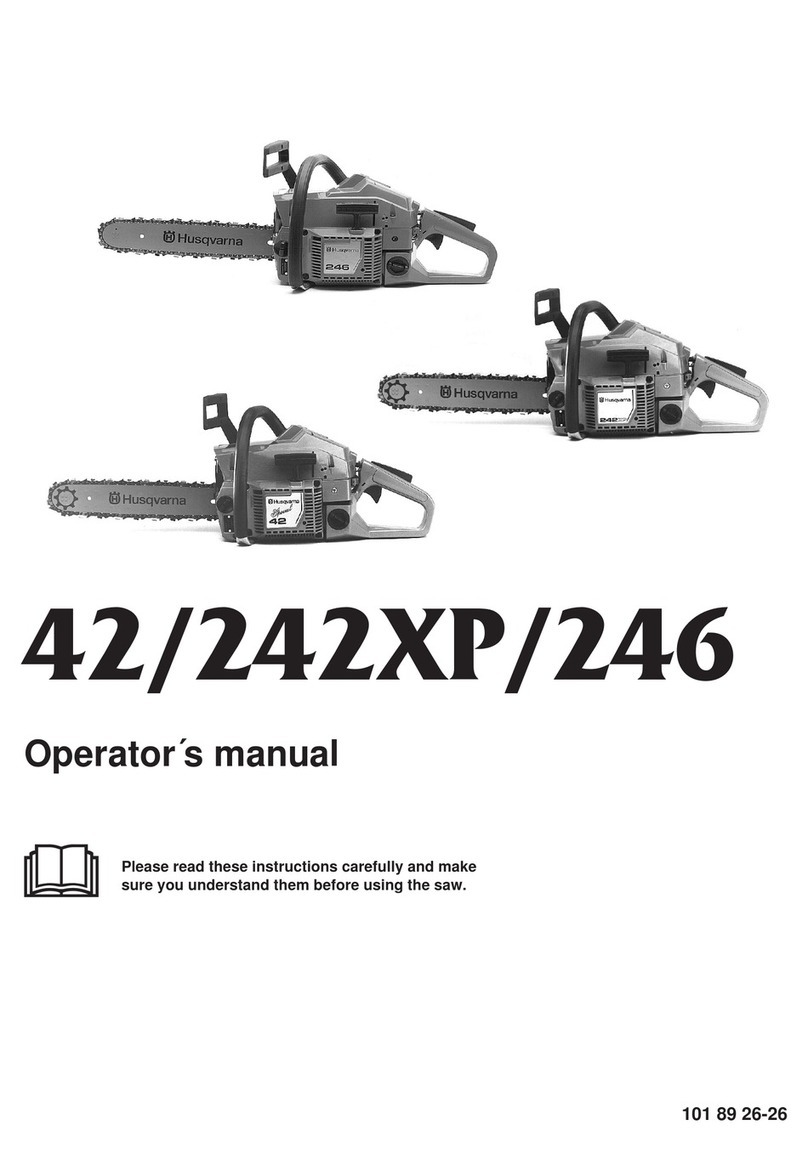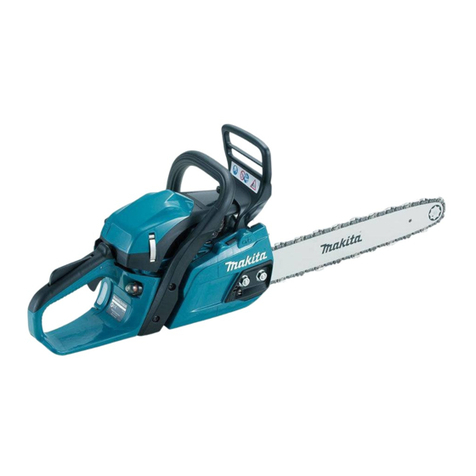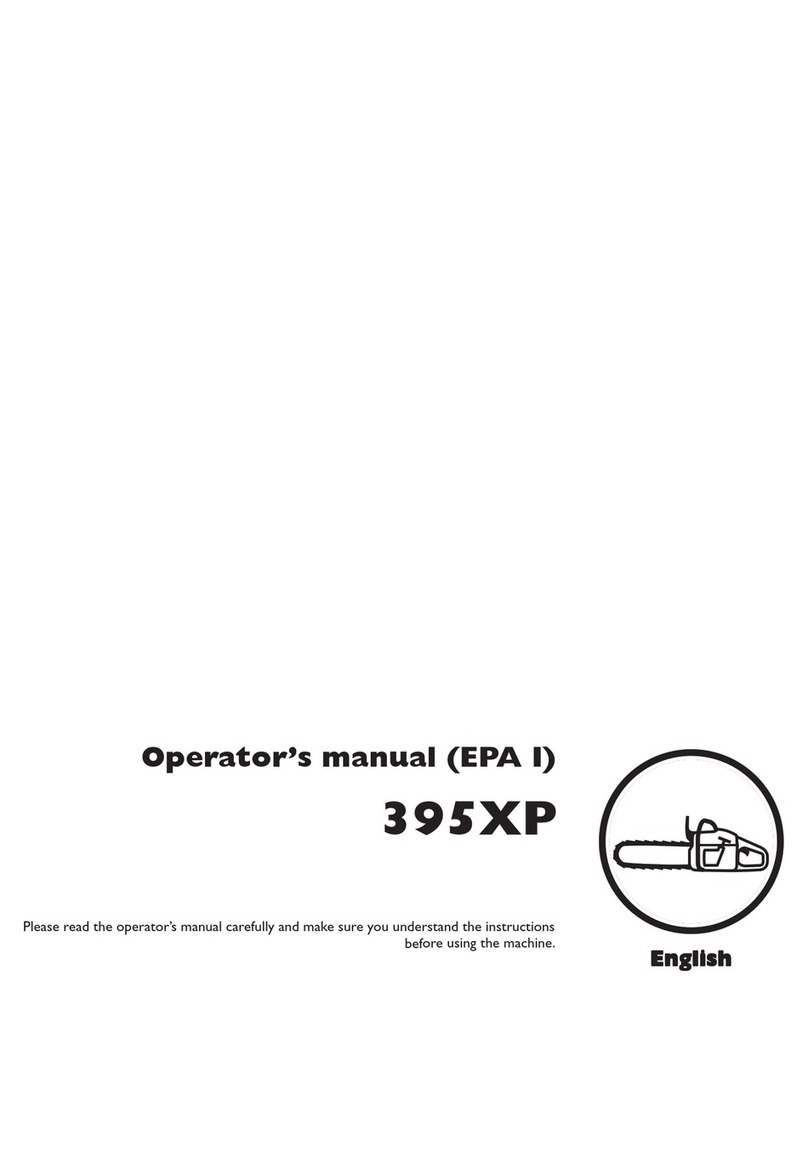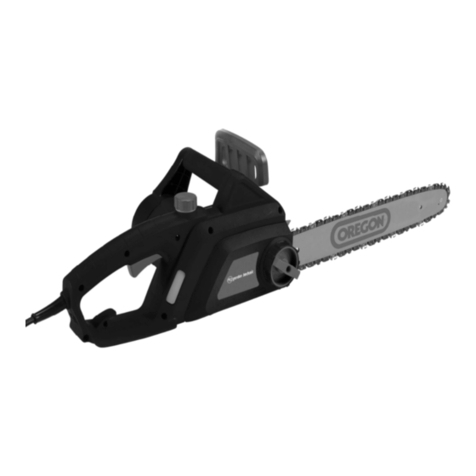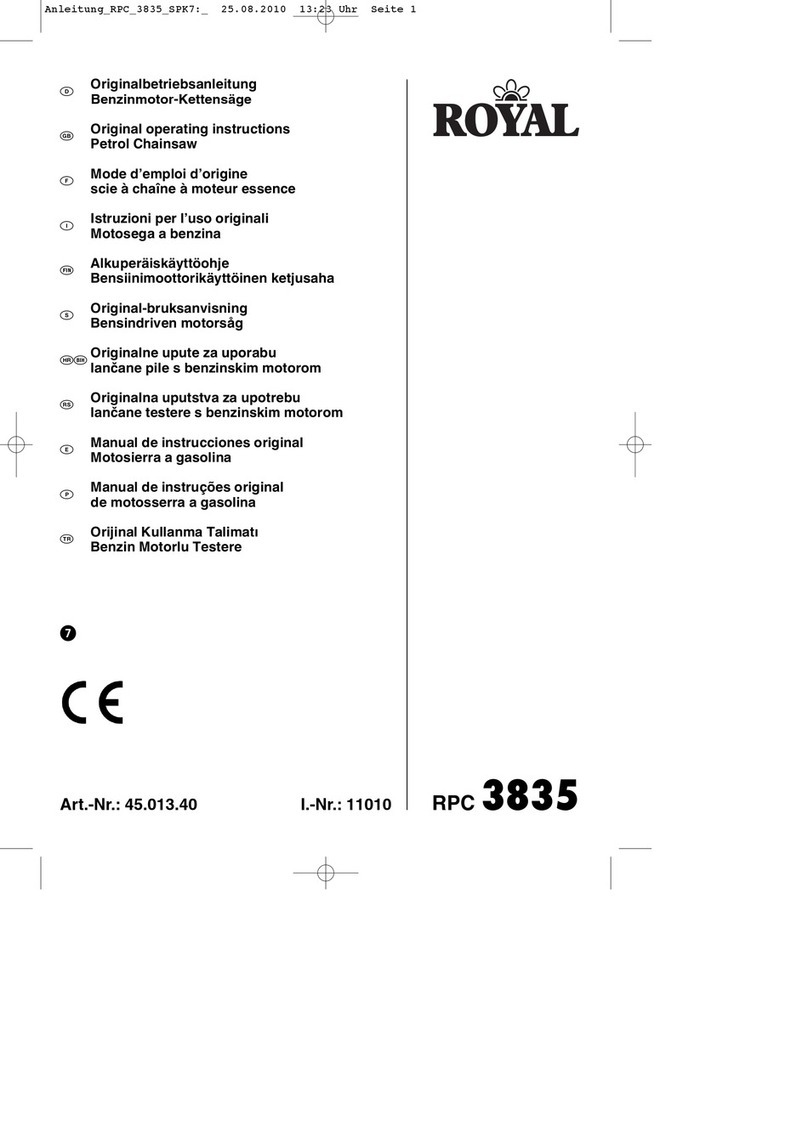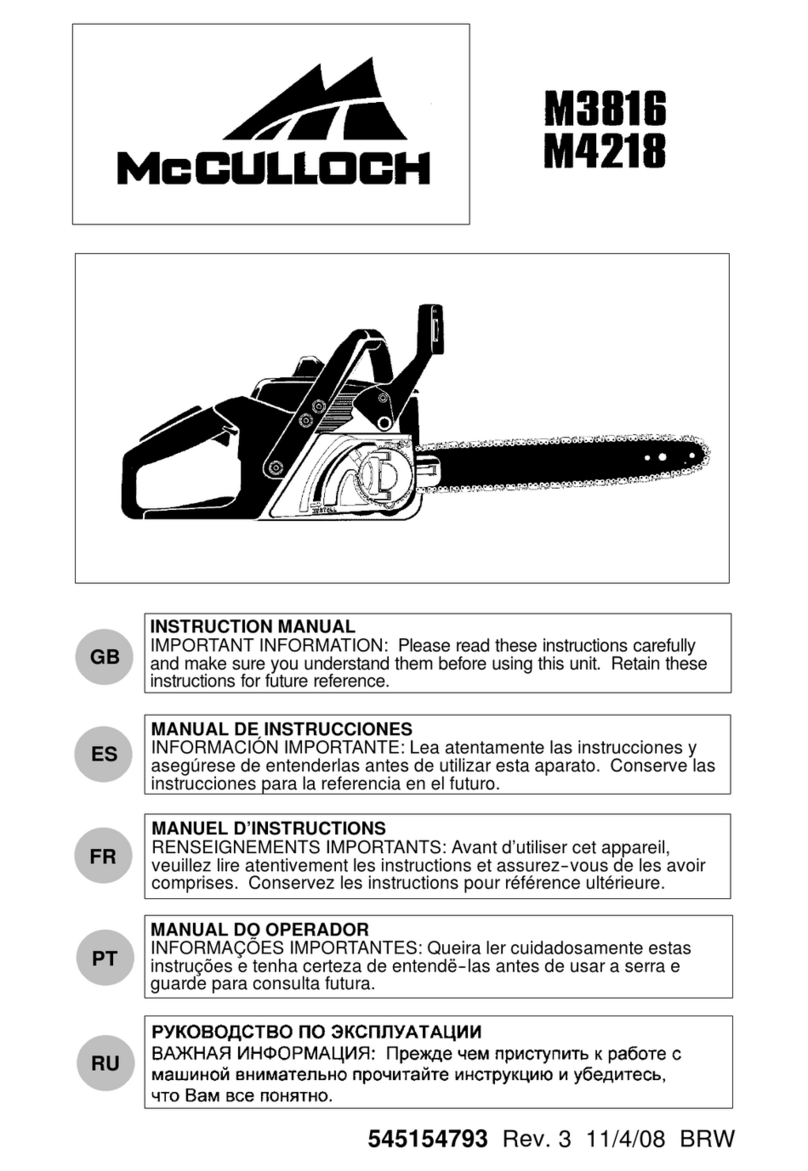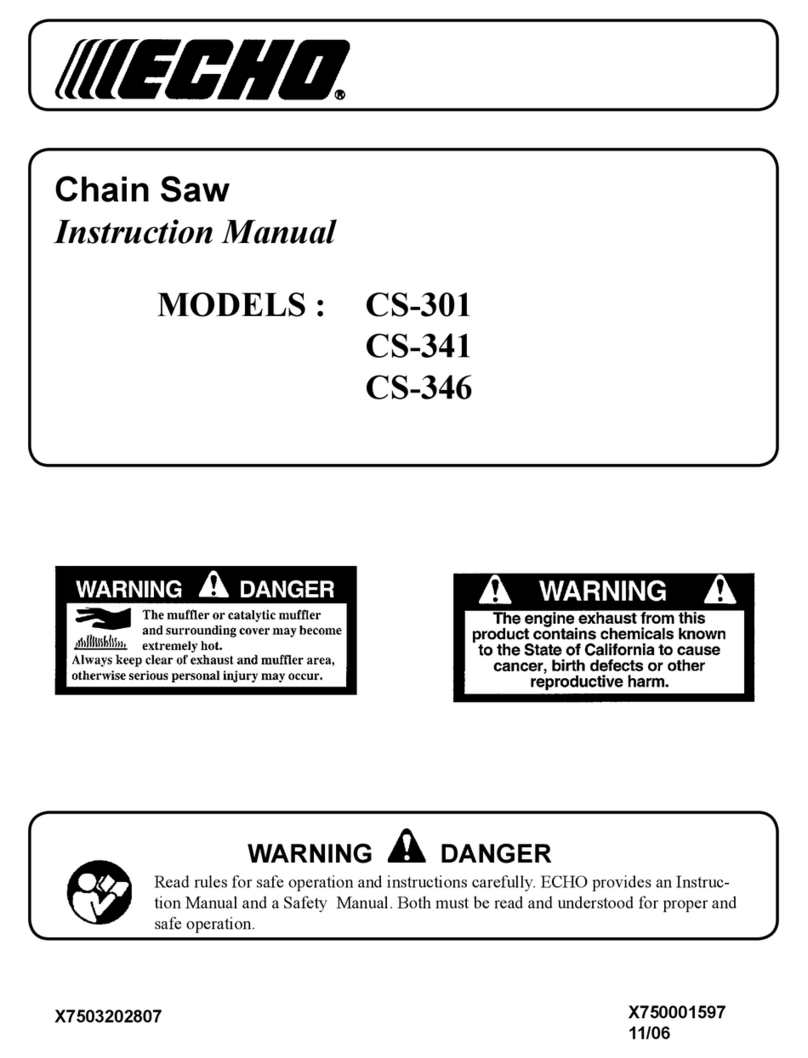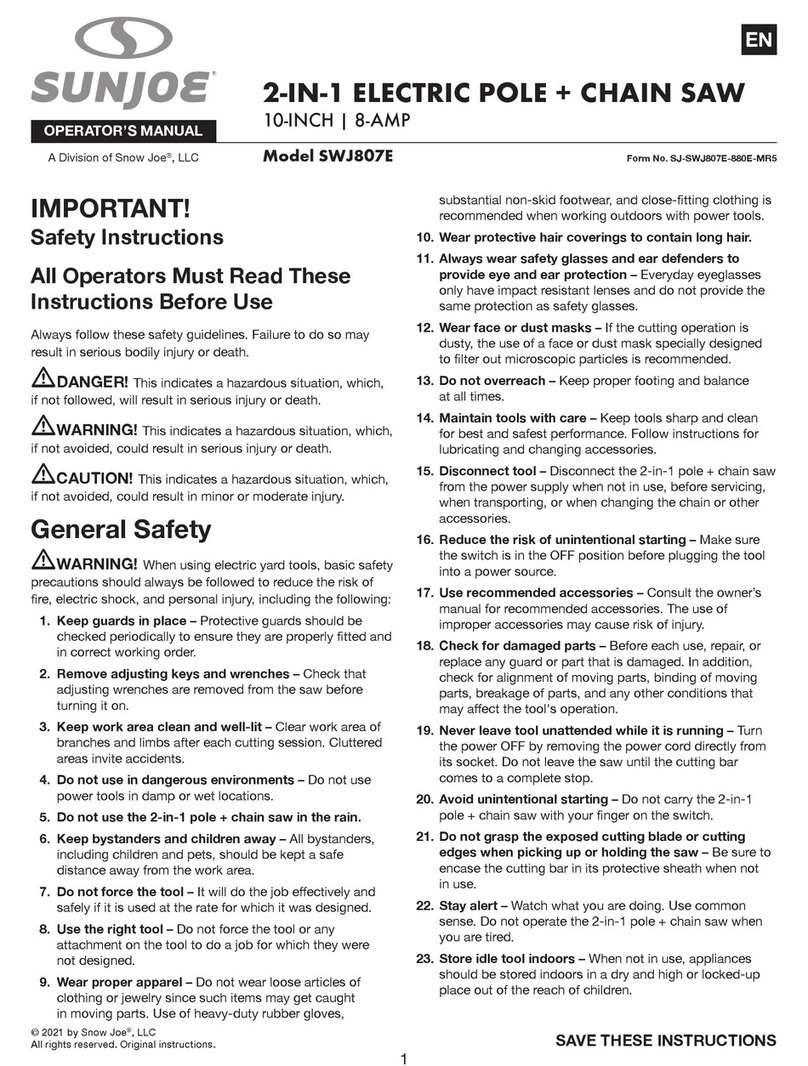II i i,,,, , IIIll I
II I I IIIIIIIII {mum] u II L I _rit
OPERATE YOUR SAW SAFELY
;. Do not operate a chain saw that is damaged, im-
properly adjusted , or not completely and securely
assembled.
2. Operate the chain saw only in outdoor areas.
3, Do not operate the saw from aladder or in a tree,
4. Position all parts of your body to the left of cut and
. away from the saw chain when the engine is
running.
5. Cut wood only, DonotcutmeteJ,plastice,masonry, non-
woodbuilolngmaterials, etc.Donut useyoursawtopryor
shoveaway limbs,rootsorotherobjects.
6. Makesurathe chain willnot make contact with anyob-
ject while starting the engine. Never tryto startthesaw
when the guidebar isinacutorkerf,
7. Use extreme caution when cutting small size brush
and saplings. Slender material can catch the saw
chain and be whipped toward you or pull you off
balance.
8. Be alert for springback when cutting alimb that is
under tension so you will notbe struck by the limb or
•saw when the tension in the wood fibers is released.
9. Do not put pressure on the saw at the end of a cut.
This can cause you to lose control when the cut is
completed.
10. Stop the engine before setting the saw down.
MAINTAIN YOUR SAW IN GOOD
WORKING ORDER
1, Haveall chain saw service performed by a qualified
service dealer with the exception of the items listed
in the maintenance section of this manual. For
•examp!e, if improper toolsaxeused _remove or hold
the flywheel when servicing the dutch, structural
damage to the flywheel can occur and cause the
flywheel to burst.
2. Keep fuel and oii caps, screws and fasteil_f_
securely tightened.
3. Keep the handles dry, clean, and free of oil or fuel
mixture.
4. Make certain the saw chain stops moving when the
throttle trigger is released. For correction, refer to
page 19 for carburetor idle adjustment instructions.
5. Stop the_saw ifthe chain strikes a foreign object. In-
spectthe unitand repair or replace parts as necessary.
6. Disconnect the spark plug before performing any
:maintenance except for carburetor adjustments.
7, Never modify your saw in any way. Use only attach_
ments supplied or specifically recommended by the
•, manufacturer.
8, Always replace the handguard immediately if it
becomes damaged, or broken or is otherwise
"removed.
9. For Model 2300 AV & 2300 CVA, keep the vibration
isolators in good condition. Periodicallyinspect
isolatorsfortears,ripsorseparationoftherubberportion
fromthemetal mountings. Navea qualifiedserviCedeaJer
replacethe isolatorsif worn or damaged, if vibration
increases orifmounts developanoutofroundorswollen
•shape from exposuretogasoline and/orot. It isrecom-
mendedthatallisolatorsbe replacedwhenafailuretoone
Occurs.
CARRY AND STORE YOUR SAW SAFELY
1. Hand carry the unit with the engine stopped, the
muffler away from your body, and the guidebar and
chaintotherearcoveredpreferablywithascabbard.
2. Before transporting in any vehicle or storing in any
enclosure, allow your saw to cool completely,cover
the bar and chain and properly secure to avoid
turnover, fuel spillage or damage.
3. Empty the fueltank before stodng the tool. Use
upfuelleffinthecarburetorbystarting the eng-
ine and letting the engine run until it stops.
4. Store in a dry area out of the reach of children and
away from where fuel vapors can reach sparks or an
open flame from hotwater heaters,furnaces,etc.
THISCHAIN SAW IS FOR OCCASIONAL USE ONLY.
NOTE: Exposure tovibrations through prolonged useof
chain saws may produce Whitefinger disease
(Raynaud'_ pherm.,'_enon). This phenomenDn
reduces the hand's ability to feel and regulate
temperature, produces numbness and burning
sensations and can cause nerve and circulation
damage and tissue necrosis.
An anti-vibration system designed to reduce
engine vibration isrecommended forthose using
chain saws on a regular or sustained basis and is
providedon Model 230OAV and 2300 CVA.An anti-
.vibrationsystemdoes not guarantee theavoidance
of Whitefinger disease, Continual and regular
usersmust monitor closely theiruse ofchainsaws
and physical condition.
.Notice: Refer to the Code of Federal Regulations, Section
• ' 1910.266(5); 2.5.1 of American National Standard
•Safety Requirements for Putpwood Logging,ANSI
03.1-1978;and rete'4ant state safety codes when
using achain saw for logging purposes;
SAVE THESE INSTRUCTIONS
